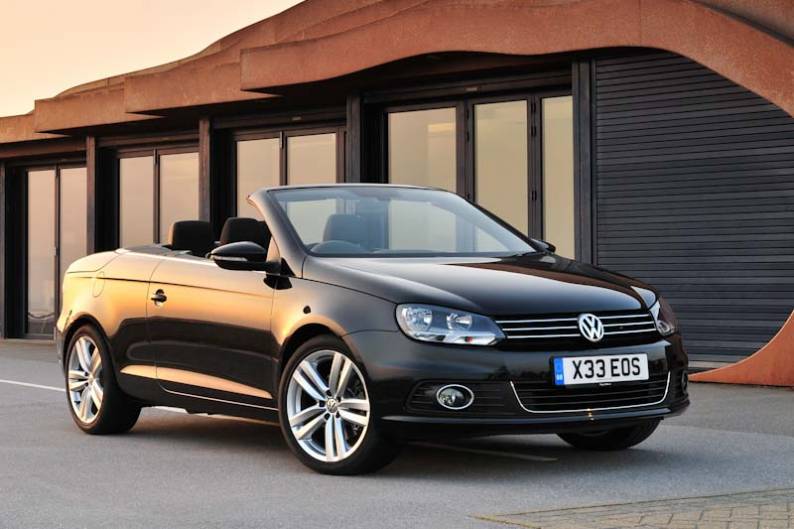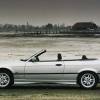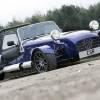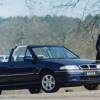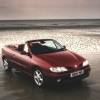
RAC sale – up to 33% off*
• Roadside cover from £5.29 a month†
• We get to most breakdowns in 60 mins or less
• Our patrols fix 4/5 breakdowns on the spot

By Andy Enright
Introduction
Sometimes, simple is good. A recent survey found that most buyers, when presented with different samples of product packaging, gravitated towards the simplest and cleanest branding. Clearly this can only work when the brand is so well known that it doesn't need to explicitly communicate the benefits of its product on the packet, bottle, box or whatever but it's refreshing proof that less can be more.
Volkswagen has clearly been thinking along similar lines with the design direction of its most recent wares and the facelifted 2011-onwards version of its Eos convertible model demonstrated this philosophy as clearly as any of the company's cars. Here's what to look for when buying a used example of one of these cleanly-styled folding metal drop-tops.
Models
2dr convertible (1.4, 2.0 petrol, 2.0 diesel [SE, Sport, Exclusive)
History
First introduced in 2006, the Eos sold well in the UK thanks to a slick five-piece folding hard top with smoked glass roof section: and a reliance on the British love for Volkswagen build quality. The 2011 facelifted design offered more of the same, with an even more sleek and pared-back look, plus extra equipment and greater efficiency.
This improved Eos rolled into UK dealers in February 2011, with a choice of either 122 or 160PS 1.4-litre petrol engines, a 210PS 2.0-litre unit as seen in the Golf GTI and a 2.0-litre diesel good for 140PS. The trim levels on offer were SE, Sport and Exclusive. Volkswagen clearly thought it had done a pretty good job on the Eos, because it then did very little to the car until it reached the end of its life in 2015. It got a DAB stereo in 2014, but that was about it. The car that really sounded the death knell for the Eos was the Golf Cabriolet, launched at the end of 2011. The soft top Golf was cheaper and handled better than the Eos.
What You Get
As for the roof itself, the mechanism is unchanged over the original version of this car, save for the option buyers of the facelifted version get of operating it remotely, useful if you're over the road from your parked Eos sipping a cappuccino and the heavens suddenly open. Most of the time though, you'll be dealing with the folding top via the controls located within the front centre armrest. The centre black switch operates the sunroof element of the roof, ideal for those times when you simply want sun without wind. But should the weather brighten sufficiently for you to retract the entire roof mechanism, then the surrounding chromed switch will take care of the complete process for you in an acrobatic fashion that still makes passers-by stand and stare.
Mind you, they'd better not be standing too close to the boot when the whole thing starts. The back of the car initially falls rearwards and would clonk into the vehicle behind if you were tightly parked had not Volkswagen decreed that all Eos models should have rear parking sensors to disable the roof mechanism in such a situation. Assuming that you are in a position to use it - and to be fair, it doesn't need an enormous amount of space (the German designers reckon you can operate the top inside most domestic garages) - the folding roof mechanism is worked by an electro-hydraulic pump with no fewer than eight hydraulic cylinders and sandwiches itself into five separate pieces in just 25 seconds.
Of course, once the convertible panels have folded themselves into the boot, they'll also have munched through a large part of the available baggage space on offer, roof-down luggage capacity falling to just 205-litres. That's a little less than you'd find in a family hatchback-based convertible like Renault's Megane Coupe-Cabriolet or Peugeot's 308CC - but that's because Volkswagen doesn't really want buyers comparing this Eos to those kinds of cars. That's why the designers have robbed a little of the boot space in pursuit of a rear seating area that can comfortably accommodate two adults as long as the journey isn't too long. To rival that, you'll need a much pricier executive sector cabriolet based on something like an Audi A5, a BMW 3 Series or a Saab 9-3.
What You Pay
Please fill in the form here for an exact up-to-date information.
What to Look For
First off, make sure that if you're looking at an early 2011 car that it is a facelifted Eos - and not an example of the original version of this design. Keep a look out for cars that have been flogged by corporate users and ensure that servicing has been attended to diligently. Check the car's specification carefully, as some of the more desirable features weren't standard on lower spec models. Satellite navigation is a desirable feature and the DSG twin-clutch gearbox will also make your Eos easier to sell on when the time comes to part ways.
Replacement Parts
(approx based on a 2011 Eos 1.4 TSI excl. VAT) Parts aren't priced too badly, with a clutch assembly costing around £75 and an alternator costing close to £115. Brake pads front and rear are about £55 and £45 respectively.
On the Road
Given that sunlight travels 93 million miles to reach us, it's nice to be able to give it a warm welcome - as you'll want to do at every opportunity in this car. Our changeable climate doesn't allow roof-down motoring as often as we might like of course, which is why this car's unique provision of a tilt and sliding sunroof for patchier days is so welcome. The downside though, is that the metre-wide glass panel required for this adds to this Eos' weight. The 22kg bulk of the CSC roof mechanism means that this car is roughly 300kg heavier than equivalent Volkswagen Golf hatchback models (and even 100kg heavier than the much larger MK7 Passat from this era), so you might not expect the powerplants on offer to have quite the same get-up and go as they do when fitted to some of the brand's other models.
In the event, it's not too bad: the engines on offer are, after all, a willing bunch, though only the flagship 210PS 2.0-litre TSI petrol unit feels truly fast, using that Golf GTI motor to crest sixty from rest in 7.8s on the way to 148mph. Over 60% of Eos customers opt to fill their cars from the black pump, choosing the 140PS 2.0 TDI diesel variant which wafts you along on a wave of torque and feels faster than the 10.3s 0-60mph time would suggest. Both these 2.0-litre models come with the option of a clever 6-speed twin-clutch semi-automatic DSG gearbox with lightning quick changes but a hefty price tag.
And that could well be a little more than you'd thought of spending on a compact cabriolet of this sort. Should that be the case, then you might find the 1.4-litre TSI petrol models to offer a better combination of virtues. There's a 160PS variant that's not much slower than the top 2.0-litre petrol turbo, but don't overlook the entry-level 122PS 1.4-litre TSI petrol unit, which manages rest to sixty in 10.9s on the way to 123mph.
Which is quite as much performance as you really need to properly enjoy this car. It isn't, after all, supposed to be an MX-5 or Lotus Elise-style roadster - something you realise as soon as you venture down a bumpy road. The ride quality, you see, is superb, the shudders and shakes that afflict so many roofless models having been banished over all but the worst tarmac imperfections. Sport models get tauter springs but even the standard Eos handles well and there's loads of grip, though this isn't a car you'll often want to drive just for the fun of it. The Eos doesn't feel like a convertible once its roof is in place. It's quiet and a glance skyward reveals a convincing looking ceiling. Roof down, all the engines bar the diesel keep themselves to themselves during the sort of low-speed cruising that lets bystanders get an eyeful of the car's impressive looks.
Overall
The Volkswagen Eos was always one of those cars that was easy to overlook when it was on sale, but which is now increasingly missed since it's departure. There's something ever so genteel about it. In truth, it wasn't really excellent in any particular area, but it was very good in many and that's the mark of a car that's genuinely easy to live with and enjoyable to own.
What's more, there's something to be said for every engine in the range. While most people will no doubt gravitate to the diesel cars, we reckon the best buys bookend the Eos range in the 122PS entry-level 1.4 BlueMotion and the punchy 210PS 2.0-litre TSI. Both offer much when it comes to relaxed, practical and affordable quality convertible motoring.

